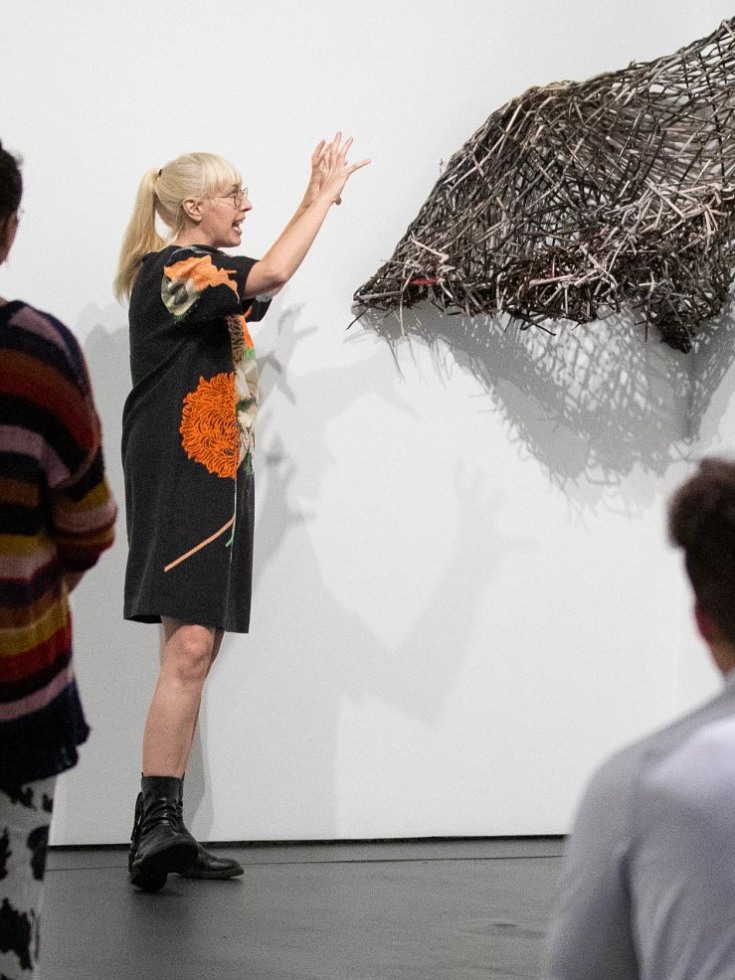PROVIDENCE, R.I. [Brown University] — Not long ago, filmmaker and artist Elisabeth Subrin watched a 1983 interview with the late French actress Maria Schneider and became transfixed.
The conversation, ostensibly meant to cover Schneider’s film career up to that point, took an unexpected turn when the interviewer asked her about the controversial film “Last Tango in Paris.” Schneider refused to comment: In 1972, the then-19-year-old, co-starring alongside a 48-year-old Marlon Brando, had unwillingly filmed an unscripted rape scene for the movie that traumatized and haunted her for the rest of her life. Instead, she launched into a stunning, prescient meditation on power imbalances and sexism in the film industry and beyond.
That interview inspired Subrin to create “The Listening Takes” — a brand new immersive sound, video and sculptural installation coming to Brown University’s David Winton Bell Gallery on Thursday, Feb. 9.
In the installation, three award-winning women in film — Manal Issa, Aïssa Maïga and Isabel Sandoval — play Schneider in three separate reenactments of that 40-year-old interview. While Issa’s reenactment remains faithful to Schneider’s tone and words, Maïga and Sandoval subtly change their answers and body language to reflect changes in the ways actresses have spoken about consent and power over the decades.
The installation, said Brown Arts Institute Director of Exhibitions and Bell Gallery Chief Curator Kate Kraczon, is a powerful exposé of the film industry’s — and many other industries’ — tendency to silence people, most often women, who speak candidly about their experiences with sexism and sexual assault in the workplace.
“Maria Schneider was voicing her experiences with uneven and gendered power dynamics in the film industry decades before the #MeToo movement began,” Kraczon said. “Elisabeth Subrin’s project untethers Schneider from ‘Tango’ and allows the nuances of her interview to be reimagined within three extraordinary performances.”
